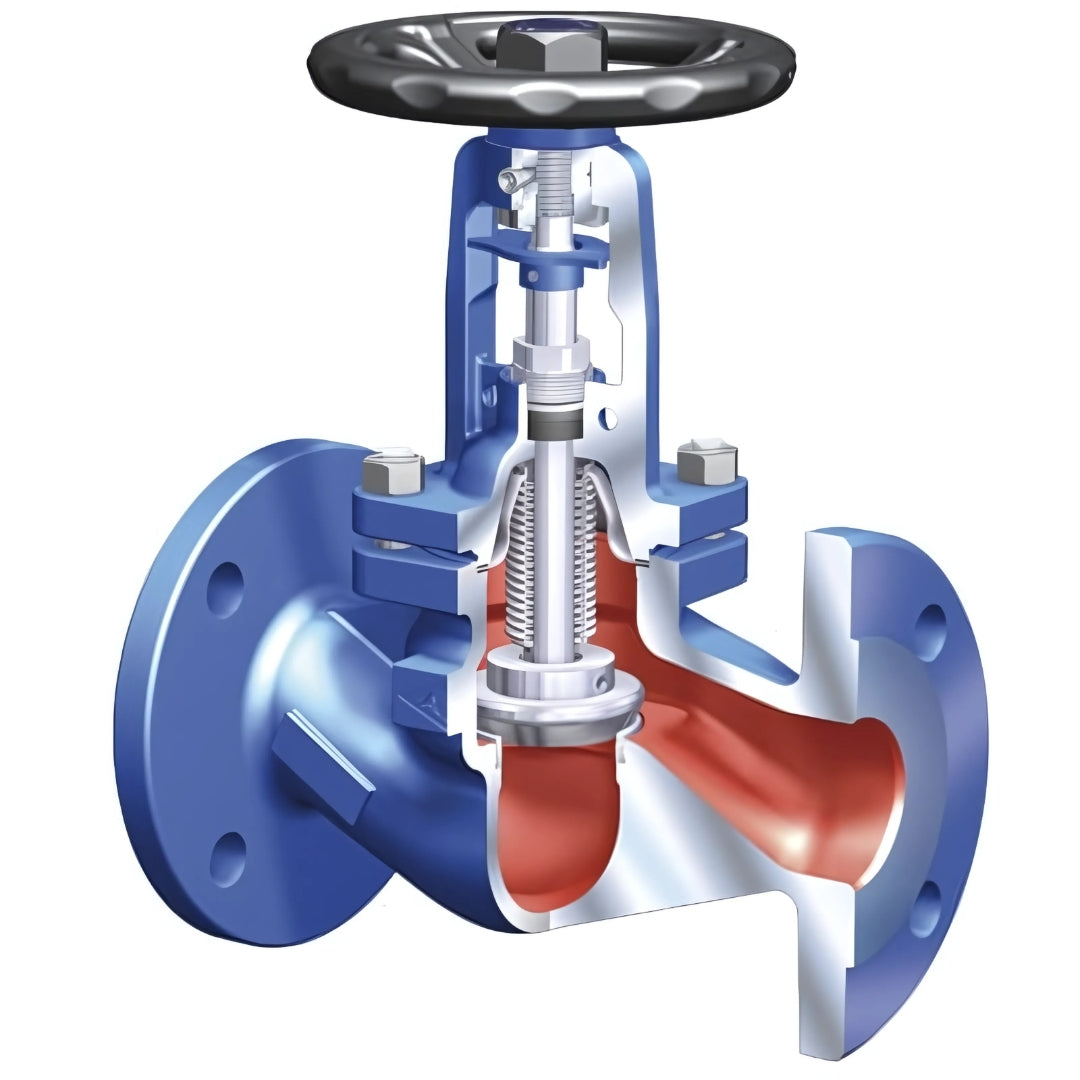Steam Valves
Ari Armaturen FABA+ Bellows Sealed Globe Valve (Flanged PN40, Stainless Steel Body)
Ari Armaturen FABA+ Bellows Sealed Globe Valve (Flanged PN40, Stainless Steel Body)
Couldn't load pickup availability
The FABA+ Bellows Sealed Globe Valve with PN40 flanged connections and a stainless steel body is engineered for high-integrity flow control in critical steam, gas, and fluid systems. With its advanced bellows seal technology, this valve offers zero stem leakage, making it ideal for hazardous, high-temperature, or environmentally sensitive media.
Manufactured from corrosion-resistant stainless steel, the valve body ensures long-term durability and resistance to aggressive process fluids, thermal cycling, and pressure variation. The PN40 pressure rating allows the valve to operate reliably in high-pressure pipelines up to 40 bar, commonly found in chemical plants, clean steam systems, and high-purity processing environments. The multi-layer stainless steel bellows, paired with a rising stem and backseat design, provides dual stem sealing for enhanced safety and service life.
As part of the ARI-Armaturen FABA+ range, this valve combines precision flow control with robust construction, offering peace of mind in the most demanding industrial settings.
Key Features
Stainless Steel Body
Offers excellent corrosion resistance and hygiene, ideal for aggressive and high-purity media.
PN40 Flanged Connections
Rated for high-pressure pipelines up to 40 bar, suitable for demanding steam and process systems.
Bellows Seal Design
Prevents fugitive emissions and stem leakage, ensuring full environmental and process containment.
Backseat Feature
Provides a secondary seal when the valve is fully open, allowing safe gland packing maintenance.
Linear Globe Valve Control
Enables precise throttling and dependable shut-off for accurate flow regulation.
Low Maintenance, Long Life
Engineered for durability and ease of servicing, reducing downtime and lifecycle costs.
Share

FAQ's
What is the difference between a valve and an actuator?
What types of actuators are available?
The main types of actuators are:
Pneumatic actuators – use compressed air for fast, reliable operation.
Electric actuators – use electrical power for precise control.
Hydraulic actuators – use fluid pressure for high-torque applications.
Each type offers unique advantages depending on the environment, media, and system control needs.
How do I choose the right actuator for my valve?
To select the correct actuator, consider:
Valve type and torque requirement
Power source available (air, electric, or hydraulic)
Operating environment (temperature, humidity, hazardous area)
Control signal type (on/off or modulating)
Matching actuator torque and compatibility with the valve’s ISO mounting ensures reliable performance.
What are the main types of valves used in automation?
The most common valves in automated systems include:
Ball valves – for tight shutoff and quick operation.
Butterfly valves – for larger flow control with compact design.
Globe valves – for precise throttling and flow regulation.
Check valves – to prevent backflow.
Gate valves – for full bore flow isolation.
What’s the difference between a double-acting and spring-return actuator?
Double-acting actuators use air (or power) to both open and close the valve.
Spring-return actuators use air to open (or close) the valve, and a built-in spring to automatically return it to a safe position when power or air is lost — ideal for fail-safe operation.
How often should valves and actuators be serviced?
Regular maintenance intervals depend on operating conditions, but a good rule of thumb is to inspect every 6–12 months.
This includes checking for leaks, lubrication, seal wear, and actuator responsiveness to prevent unexpected downtime.

